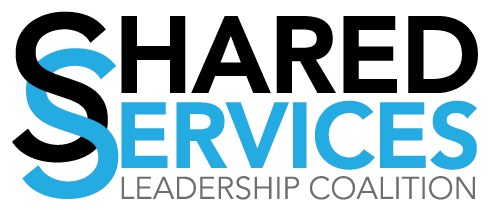Shared Services – Now!
What are Shared Services?
“Shared services” is a business model for delivery of common back office administrative services, e.g., human resources (HR), financial management (FM), purchasing, etc., and common mission-support services, e.g., geospatial services, in which customer organizations receive services from experienced third party providers with high capacity platforms who can serve multiple customers more cost-effectively than individual customers can serve themselves. After decades of evolution, shared services have become the default delivery model for common business transactions in leading public and private sector organizations throughout the world. Global experience demonstrates typical cost savings of 25% to 40% and better service over self-service models. Studies performed by the Partnership for Public Service and the Technology CEO Council have estimated savings potential of about $50 Billion from full implementation in the Federal Government. The rapid expansion of cloud technology platforms is creating ever-increasing opportunities to drive common government transactions to commercial shared service providers. Shared services are a fundamental building block of 21st Century government modernization, providing direct and indirect benefit to numerous other modernization objectives in the President’s Management Agenda and OMB’s “Cross Agency Priority Goals” initiatives.
How Shared Services enable workforce and IT modernization objectives
In addition to providing enormous direct benefits of improved service and lower cost, shared services are a force multiplier of indirect benefits towards many other government reform and modernization objectives. For example, shared services enable:
- Accelerated IT modernization and cyber security protections by concentrating scarce investment funds on a small number of higher-performing, higher-scale platforms, rather than scattering investments across a far-flung landscape of agency-specific platforms
- A higher performing government workforce by accelerating speed-to-hire to fill mission critical staffing vacancies.
- Enhanced career opportunities for administrative professionals by freeing them up from tedious, low value transactional work and enabling them to devote more time to higher value analytical and managerial challenges.
- Apples-to-apples reporting and enhanced analytics for transparency, performance and accountability reporting purposes, as a result of standardizing data and technology platforms.
The Technology CEO Council has estimated $1 Trillion in potential savings from eight shared services enabled reforms, as depicted here. A majority of the Administration’s CAP Goal initiatives are also directly or indirectly enabled by shared services, as described here.
Why is legislation necessary?
Shared services implementation has been underway in the Federal Government for decades with support from Presidential Administrations of both parties. Progress has been excruciatingly slow and discontinuous across administrations. The leading success story to date has been Federal payroll – but it took 26 years to consolidate from dozens of agency-specific platforms to today’s four government-wide platforms. This glacial pace of progress is unacceptable and fails to meet the needs of a 21st Century government. The absence of a legislative mandate has been a critical missing success factor. As noted by US Comptroller General Gene Dodaro, “Successful management reforms in the Federal Government need to have legislative underpinnings so they have permanence and consistency over time, no matter who’s in the White House or who’s leading departments and agencies.” To realize the SSLC vision, legislation is necessary to:
- Create a vision, roadmap and timetable for modernization and full-scale implementation
- Establish consistent, transparent business rules, performance metrics and governance to enable providers to compete fairly and customers to make informed choices
- Remove statutory barriers to shared service modernization and cross-agency business transactions
- Secure an appropriate role for the private sector as direct and indirect providers in the shared services marketplace
- Oversee and enforce timely implementation and cost savings realization (i.e., a strong compliance mechanism).

